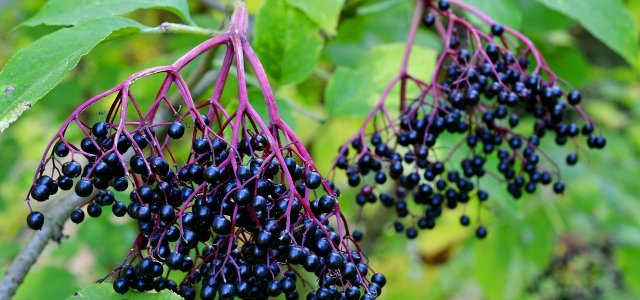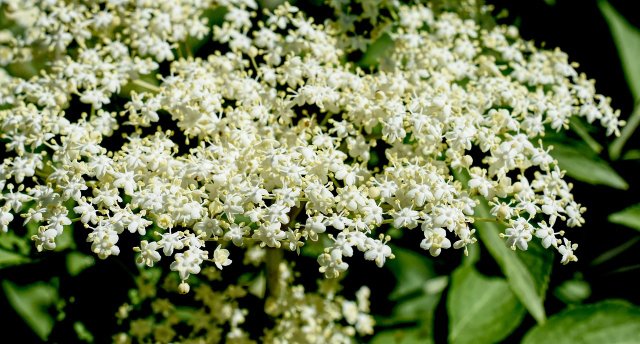
The black elderberry is ideal for insect-friendly gardens. You can easily plant the imposing elderberry shrub yourself and the necessary care is also limited.
Black elderberry: the ideal location
The black elderberry is widespread in Europe and Asia. In the wild, you can find it both in the undergrowth and at the edges of forests. The plant grows spreading and bushy and can reach a height of up to seven meters. In your own garden, you can plant it individually, integrate it into hedges or use it as a screen.
By the way, black elderberry looks good in a bee- and insect-friendly garden. Insects like the elderberry bush because its flowers are rich in nectar.
If you want to plant black elderberry yourself, it is important to choose the right location. This should have the following characteristics:
- Light: sunny to semi-shady
- Soil: sandy to loamy, not too dry
- Lime: black elderberry is lime-loving
- Nutrients: humus-rich, nutrient-rich soil
Important: When choosing a location, keep in mind that elderberry needs enough space. Ideally, the distance from walls or paved areas should be two to three feet.
Contents
Planting black elderberry: A simple guide

Plant the black elderberry either in spring (March, April) or in autumn (September, October). Once you have found the right spot, you can get young plants: go to a nursery or garden center and get advice there.
Then you can plant the black elderberry:
- Place the seedlings and pot in a bucket of water.
- Thoroughly loosen the soil at the chosen location so that it is later permeable. Remove weeds and roots.
- Dig a hole about twice the size of the root ball of the seedlings. Important: If you are growing several plants, you should keep a planting distance of about one meter.
- Enrich the soil with compost and horn shavings. The elderberry bush needs a lot of nutrients, so you can be generous.
- Pot up the young plants and loosen the root ball slightly with your hands. Place the plant in the center of the hole and fill the hole with soil. Tap the soil lightly.
- Water the black elderberry generously.
Proper care of the elderberry bush
Black elderberry is very low maintenance, to the delight of many amateur gardeners. Just follow the tips below for a gorgeous bloom:
- You hardly need to water the elderberry. However, if there is no rain for a long time in summer, you should still water it. Make sure, however, that you do not overdo it: There should be no waterlogging. By the way, many plants do not like tap water with a high lime content, which is why many gardeners rely on rainwater when watering. Black elderberry, however, does not mind lime either in the soil or in the water.
- You do not necessarily have to fertilize black elderberry. If you have chosen a good location and enriched the soil well before planting, it will take care of itself with nutrients. If you wish, you can still treat it with nitrogenous fertilizer from time to time.
- Black elderberry can be thinned out at any time. After the second year, you should prune it regularly so that it does not age prematurely. To do this, cut back any shoots that have been removed in the fall after harvesting. You should leave about ten to twelve strong shoots.
Harvest elderberries

The berries of the black elder begin to ripen around August. You can harvest them until September. When harvesting, remember that the berries do not all ripen at the same time.
Here’s how to do it:
- Wear gloves to harvest the berries.
- Cut only fully ripened cones. Use sharp scissors to do this. Umbels are the individual clusters in which the berries grow on the elderberry bush (see photo).
- Later, when you process the berries, you strip them off the stems.
Tip: Between May and July you can also collect the elderberry blossoms and make elderberry blossom jelly or elderberry blossom syrup.
Caution: You cannot eat the elderberries raw, as they are slightly poisonous. Only after you have heated them, the toxins decompose. You should also sort out berries that are still green or have a reddish shimmer, as these can still be poisonous even after processing. For example, make a delicious elderberry jelly from the berries.









